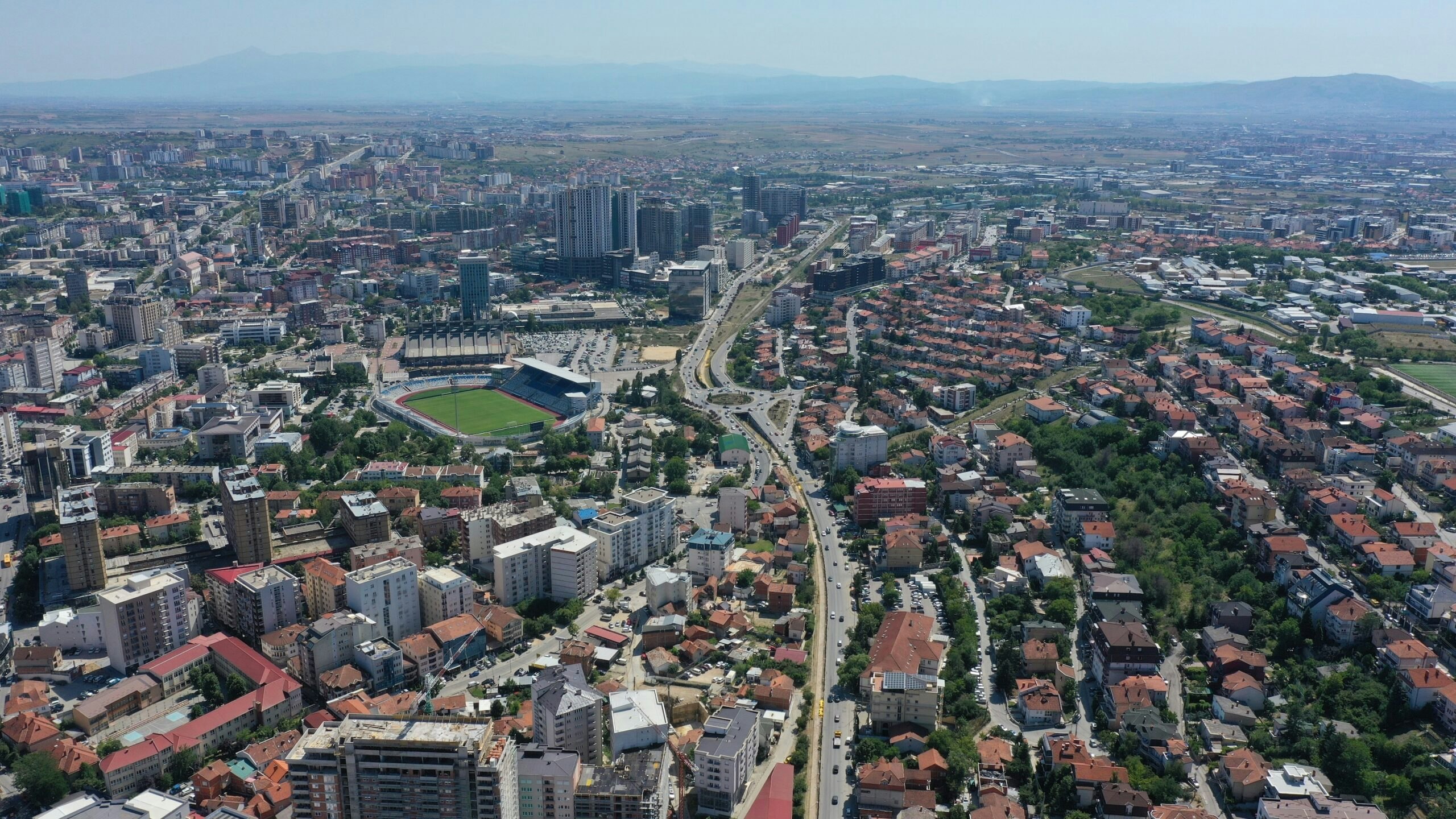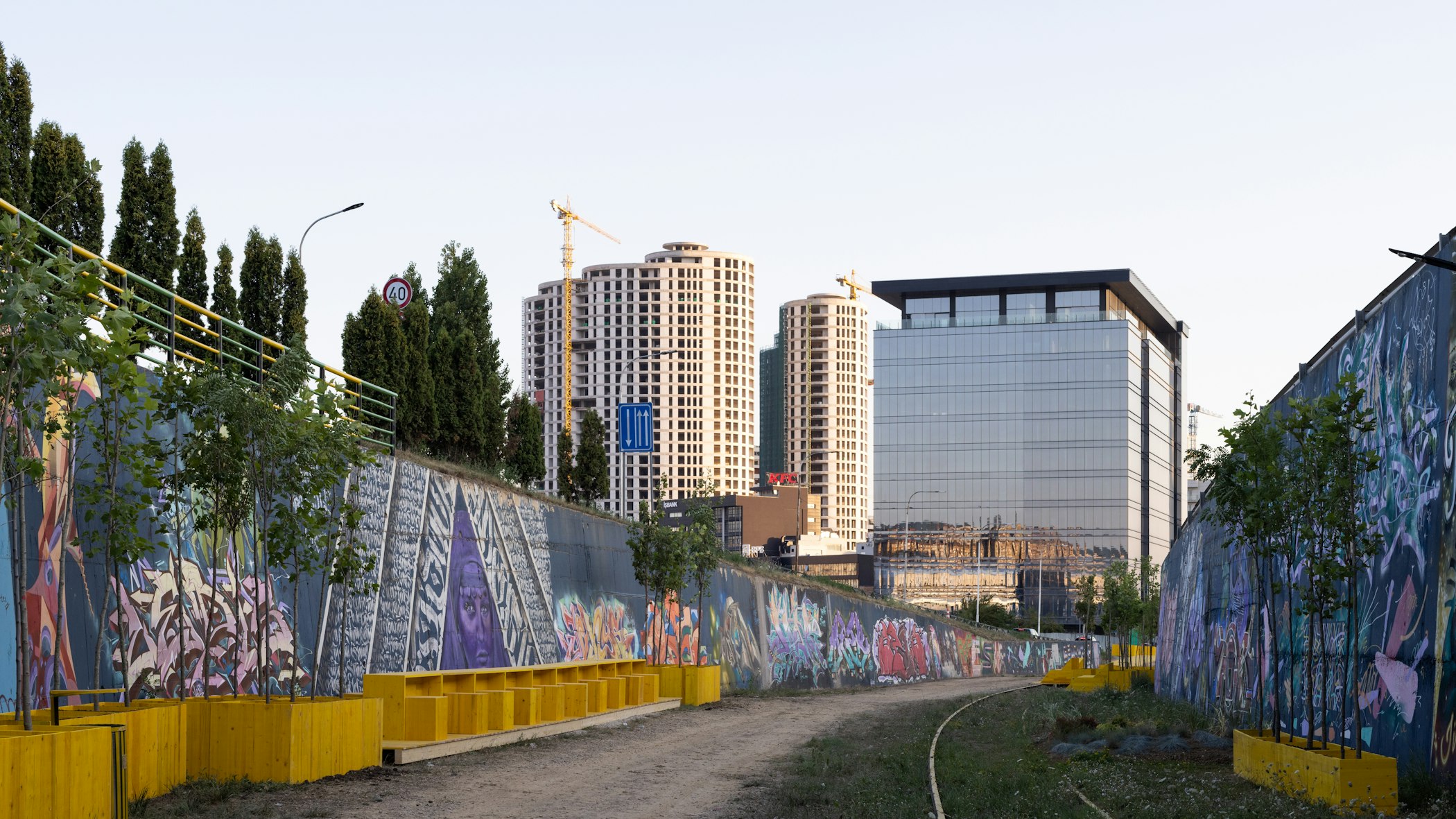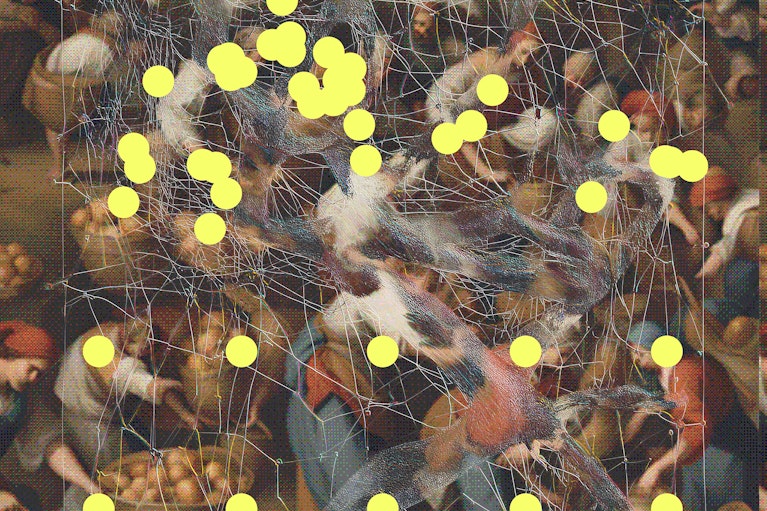Daniele Belleri is a partner and head of communications and curatorial projects at Carlo Ratti Associati, an international design and innovation firm. A former journalist, he has written for Wired and Reuters.
Carlo Ratti is an architect and engineer. He is a founding partner of Carlo Ratti Associati and a professor at the Massachusetts Institute of Technology, where he directs the MIT Senseable City Lab.
“Cities have the capability of providing something for everybody, only because, and only when, they are created by everybody.”
― Jane Jacobs
1. The Green Corridor
PRISTINA, Kosovo — At first, people turned up silently. They came and went quickly, wanting to see for themselves how the long-abandoned railway tracks were being transformed. A young mother with a toddler, relieved that they finally could avoid the heavy traffic in the nearby street. A cyclist, a rare species in this Balkan city, zig-zagging between the newly planted trees and the construction workers’ road-roller on a dusty old bike that might have been sitting in an attic for years. Three old men wearing traditional plis hats and chatting around the yellow wooden benches that had not even been moved into their final positions. They all gathered there, in the heart of a poor neighborhood, gravitating toward a new public space in a city that had far too few.
Kosovo is a small landlocked country, roughly the size of Delaware, nestled in the Balkan Mountains between Albania, Montenegro, North Macedonia and Serbia. It has a population of 1.3 million and a diaspora roughly half that size scattered across Europe. For centuries a province of the Ottoman Empire, it proclaimed its independence from Serbia 15 years ago, emerging from the conflicts that followed the disintegration of Yugoslavia. Many Westerners know its name from the 1998-9 Kosovo War, in which the United States and NATO intervened to stop Slobodan Milošević’s ethnic cleansing against Kosovo’s majority-Albanian population.
Today, the violence is over but the geopolitical situation is far from settled. Serbia still claims the territory as its own, and almost 100 other countries — including Russia, China and even democratic Spain — do not recognize its independence. Kosovars still need to get a visa to travel in the EU — a level of scrutiny that is otherwise reserved for citizens of the likes of Russia and Belarus — until a much-awaited visa-free policy becomes operative next year.
Despite its politically fraught status, the country, and most notably its capital Pristina, are deeply and fully engaged in international culture. The de-facto national currency is the euro. Many Kosovars speak English and German. Pristina is the youngest capital city in Europe in every sense; the median age is 30 and the country has a vibrant nightlife scene. The pop music superstar Dua Lipa, a daughter of Kosovar immigrants to London, is the local youth’s ambassador to the world.
In the series of urban shocks and shifts that built Pristina’s urban fabric, the most consistent result has been the constant degradation of public spaces. The centuries-old Ottoman bazaar was razed after World War II, with Josip Broz Tito’s regime imposing a general program of out with the old, in with the new. The Communist government of Yugoslavia built airy plazas, but not a free civic society to inhabit them. In the 1990s, Pristina’s ethnic Albanians were forced out of public life; they had to maintain their community in a “parallel system” of schools, hospitals and gathering places recreated within their private homes. Since the war ended and the guns fell silent, Pristina has experienced years of privatization, corruption and an unregulated “turbo-urbanist” real estate boom. Many of the remaining public spaces were swept away in the frenzy.
“We wanted to address a universal problem for architects and urban planners: how to effectively solicit public participation.”
The consequences of this turbulent history are visible everywhere. There is tremendous traffic but there are too few parking lots, so illegally parked cars obstruct any available space. There are few parks and green spaces. This is not to say that Pristina is without street life — the city’s residents frequent a vibrant collection of inexpensive bars, restaurants and cafes that the sociologist Ray Oldenburg would call “third places.” But there aren’t many places where people can gather without paying a bill.
In 2019, as a testament to the cultural ambition of its recent municipal leaders, Pristina was selected as the 14th host city of Manifesta, the European Nomadic Biennial. Manifesta, which travels to a new location every two years, was created in the mid-1990s as a contemporary art event and has now established itself as one of the most influential cultural events on the continent. The event has grown more ambitious over the years, with founder Hedwig Fijen recruiting architects to serve as creative mediators and work to make a positive long-term impact on the host city. Our firm, Carlo Ratti Associati (CRA), was recruited for this task in Pristina; we developed an “Urban Vision” for one of the city’s most trenchant challenges: reclaiming public spaces and involving the public itself.
So we had come to this disused railway corridor, a potent symbol of a city in the process of emerging from a traumatic past. It once linked Pristina with Belgrade, the Serbian capital, and was the escape route for thousands of refugees during the Kosovo War. For many years, the tracks have stood silent. But last summer, a mile-long section came back to life as a pathway for people. We called it the Green Corridor: a pedestrian path surrounded by public benches and newly planted trees, an artery for neighborhoods that have long been physically and socially marginalized, a gathering place.
Our work on the corridor was more than an attempt to bring a green public space to a city that has too few. We wanted to address a universal problem for architects and urban planners: how to effectively solicit public participation. We were focused on tackling the challenge of designing public space in a way that incorporated residents’ feedback. After decades of ever-changing regimes, the question we asked ourselves was: Could we empower the people of Pristina to make the commons they wanted?

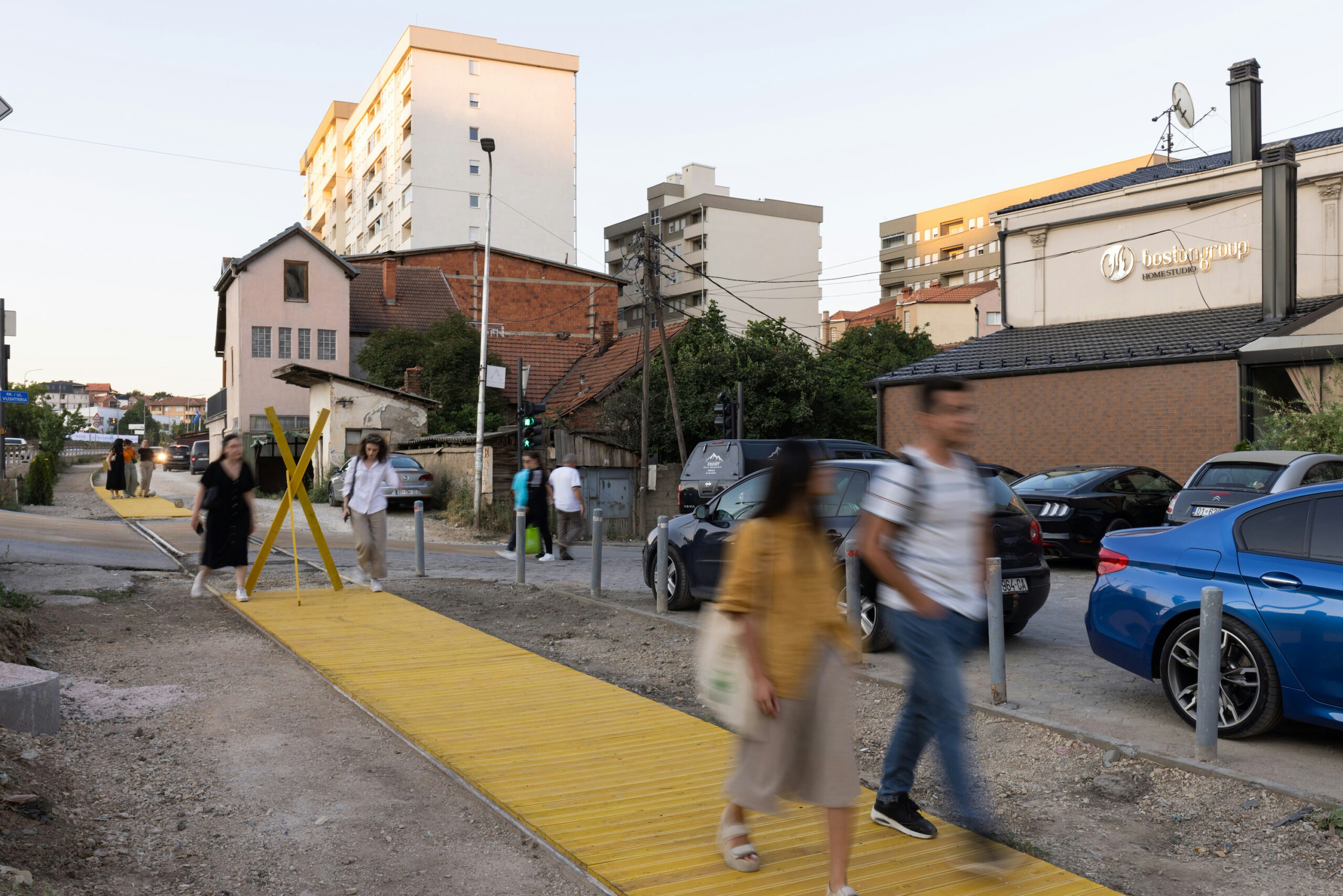
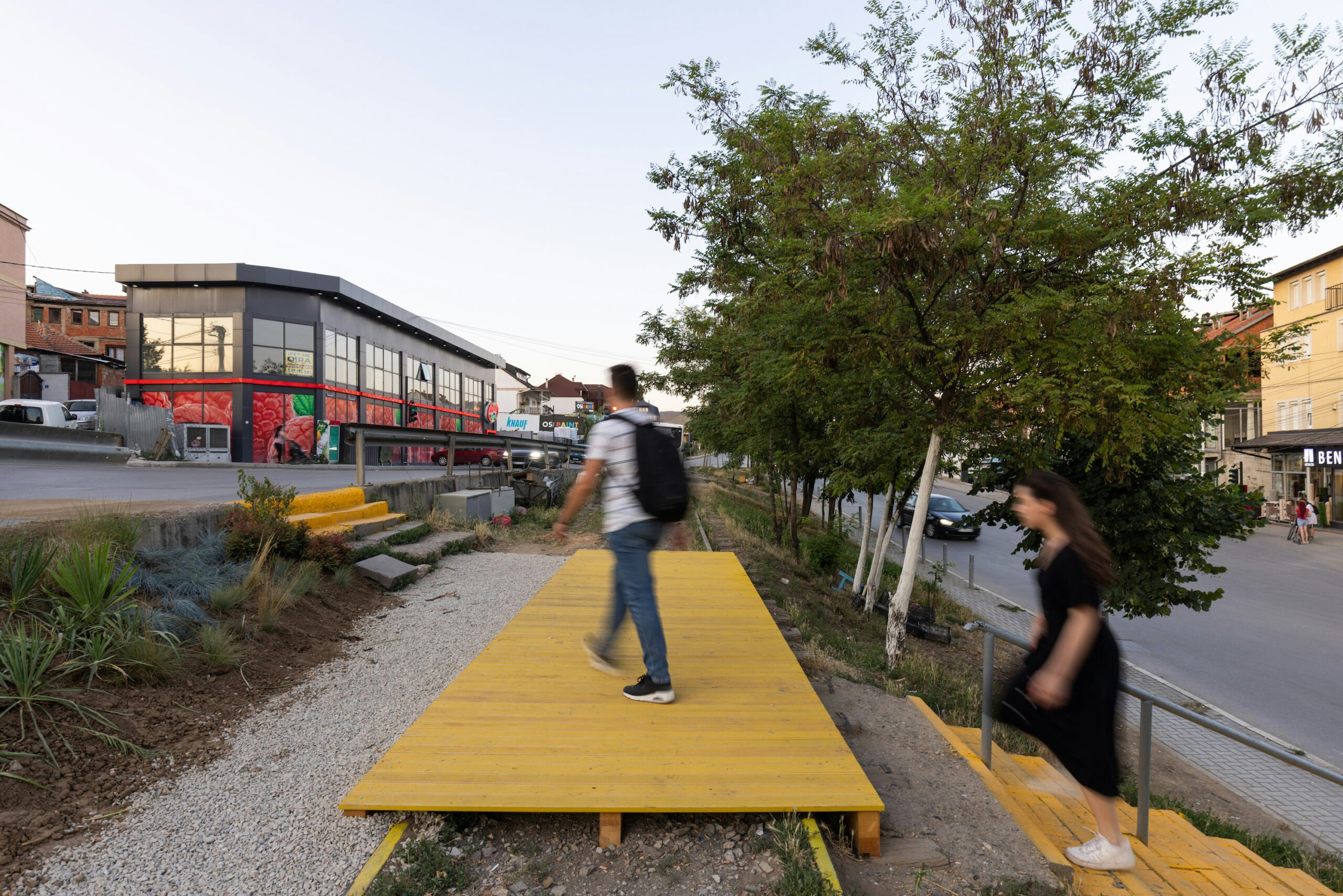
2. Public Participation Evolves
In the early 20th century, the great architects of modernity saw themselves as Prometheus reincarnated. They claimed total autonomy.
The archetype of the master architect was immortalized in the character of Howard Roark, the protagonist of Ayn Rand’s 1943 novel “The Fountainhead,” who overcame all obstacles and institutions with his personal brilliance and sheer force of will. The character inspired more than one generation to pursue architecture — and narcissism. Rourke was modeled after Frank Lloyd Wright, but his attitude could be found in many other contemporary designers.
In the 1960s, an era of countercultural revolution in practically every societal domain, a new generation of architects brought their profession closer to the people. One of the ringleaders was Bernard Rudofsky, who in 1965 presented an exhibition called Architecture Without Architects at MoMA. His thesis was that for thousands of years, humanity had engaged in a process of collective, authorless, incremental development. Designs ranging from the multigenerational family dwellings of China to the canals of Venice and Tenochtitlan evolved not from the giant leaps of isolated geniuses, but through centuries of trial and error and constant feedback with the physical environment and cultural norms.
Rudofsky refuted the notion that the architectural forms of industrial nations were superior to poor ones. Not only is collective architectural development a viable paradigm, he argued, something is lost without it.
“For thousands of years, humanity had engaged in a process of collective, authorless, incremental development.”
Thinkers like Rudolfsky gained momentum in architectural circles, especially as the decades revealed the shortcomings of modernist art. Newly built modernist cities like Brasilia and Chandigarh are testaments to the insufficiency of individual genius. They were beautiful on paper but sterile in reality, with vast concrete edifices that failed to support dynamic communities.
In Pessac, a suburb of Bordeaux, the Swiss-French architect Le Corbusier first tried his hand at mass housing in the 1920s, but the project suffered when residents rebelled against standardization with a litany of personal touches: partitioning rooms, resizing windows, sloping roofs, repainting walls and installing kitschy decorations. The aesthetics of the heroic architect had collapsed under the diverse preferences of ordinary people. Even Le Corbusier himself grew to understand this. When asked about the supposed failure of the Pessac project, he famously quipped: “You know, life is always right: It is the architect who is wrong.”
But attempts to replace top-down Modernist architecture with paradigms that actively incorporated the public did not fare much better. Despite their good intentions, the would-be pioneers largely came up short.
A notable failure was when the architect Christopher Alexander attempted to redesign the campus of the University of Oregon in the 1970s. Alexander gave radical freedom to non-specialist stakeholders, especially the activist student body who loathed their brutalist buildings, by replacing the typical master plan with a sophisticated “pattern language” that allowed anyone to provide input.
The ambitious effort, which he called the Oregon Experiment, failed to anticipate that the student body would quickly fall into apathy, barely participating in the opportunity to remake their campus. Meetings that did occur descended into endless, unproductive squabbling. Other practitioners across the realms of politics and design — for example, in efforts to establish people’s councils that allow ordinary citizens to set political priorities — have found the same. Opening complex systems to mass participation is no easy path to utopia. Collective processes readily descend into chaos, apathy and NIMBYism.
“Opening complex systems to mass participation is no easy path to utopia.”
For a litany of reasons, ordinary people cannot replace the designer. The public’s instincts are especially ill-equipped to address demographic changes or technological breakthroughs. Consider the (apocryphal) words of Henry Ford: “If I had asked people what they wanted, they would have responded: ‘faster horses.’”
So how are we to escape from the impasse upon which so many participatory designers ran aground? One promising attempt came recently from South America. The architect Alejandro Aravena, who leads the firm Elemental, specialized in building low-income housing in Chile. Working in poor communities, sometimes in the aftermath of disasters like the 2010 earthquake and tsunami, he devised a strategy that gave residents agency in their new homes while also adapting to tremendous financial constraints.
Aravena built purposefully unfinished “half-houses,” habitable in their incomplete forms but designed to have extra space that residents could eventually fill. Building only part of a house allowed Aravena and his team to construct many more units than they otherwise could have, and it gave residents long-term agency over their new homes. Rather than surrendering to the assumption that poor people should live in poor-quality housing, the half-houses can appreciate in value and serve as vehicles for building wealth.
Elemental’s half-house model is one of the most exciting advances in decades of participatory urbanism, but even this transformative paradigm has had its shortcomings. In a half-house development in Quinta Monroy, for example, residents ignored Aravena’s guidelines for expansion, leading to overcrowding, the loss of light and ventilation and the vanishing of public spaces. The quest to strike the right balance between bottom-up and top-down continues; there are many more methods to explore.
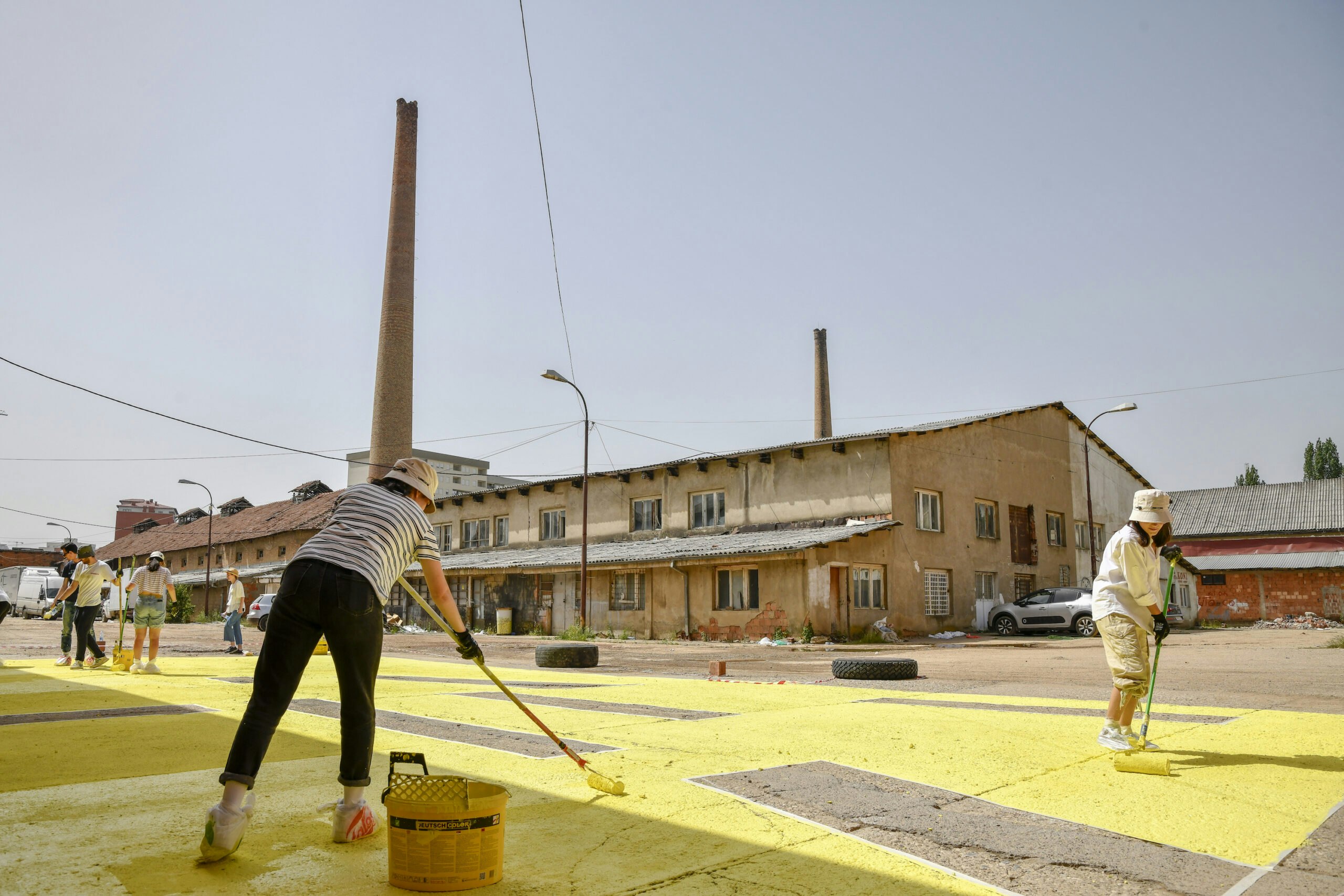

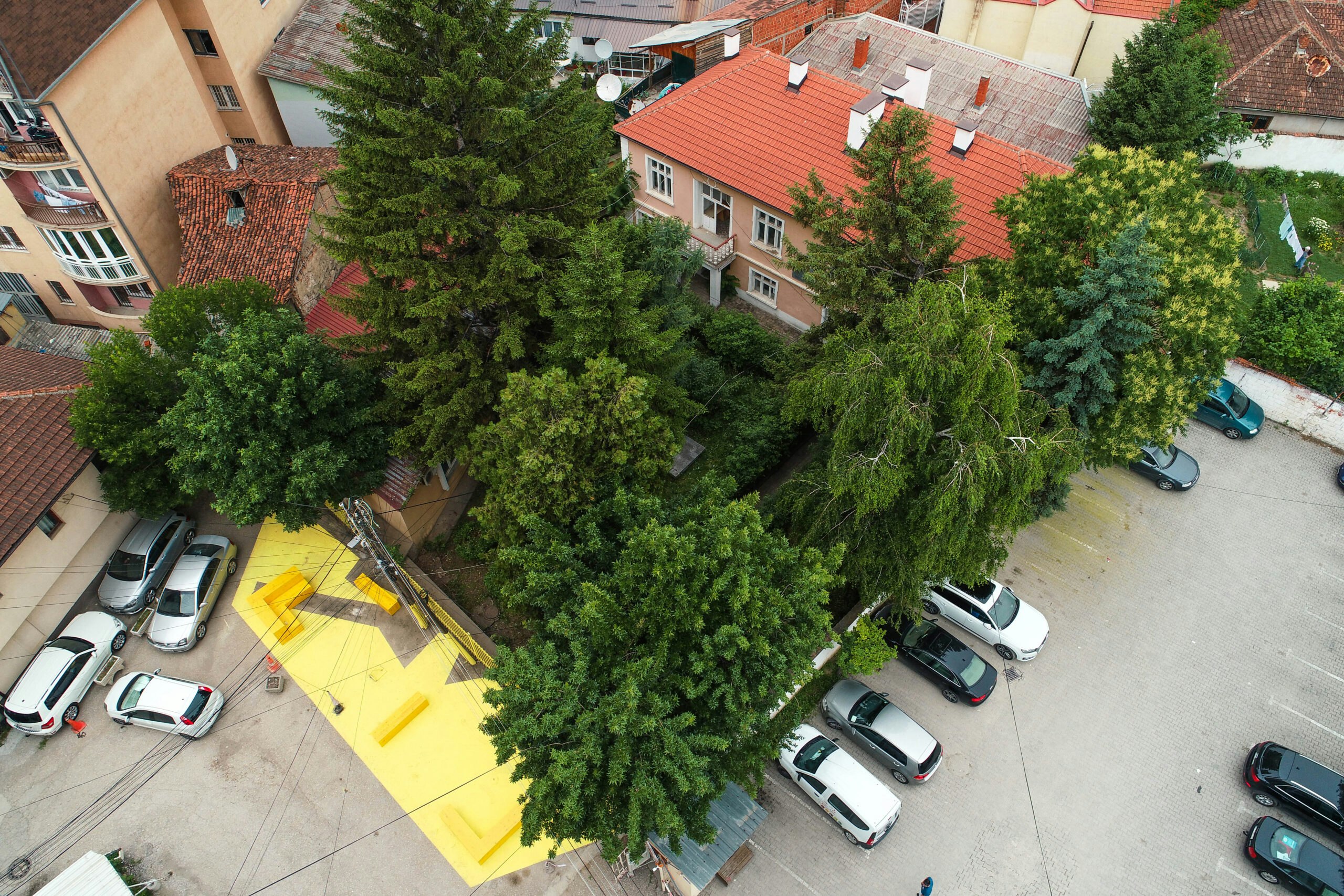
3. Open-Source Urbanism In Pristina
For the last decade, we at CRA have been developing a methodology for public participation called “open-source architecture.” It is named after open-source software projects like Wikipedia, which have thrived on the power of new technology, intense collaboration and constant change.
Open-source urbanism demands a change in mindset: from aiming toward optimal designs to letting projects be open-ended. The modernists aspired to perfection: complete, heroic plans that would never have to change. The first wave of participatory architects tried to involve the public in the design process, but their methods still resulted in relatively unchangeable final products. Rather than aiming at any final destination, open-source urbanism privileges inexpensive, open-ended interventions that can develop in many possible directions.
We arrived in Pristina in the spring of 2021, more than a year before Manifesta 14 opened. For weeks, we spoke with local architects, artists, scholars, politicians and journalists. These conversations conveyed a common love for Pristina, but also a shared sense of pessimism about the possibility of improving the city’s degraded public spaces.
We also did our “listening” with digitally augmented senses. For two months, architecture students from the University of Pristina led by Professor Ilir Gjinolli and aided by the Kosovo Architecture Foundation walked and biked the streets of the city with GoPro cameras attached to their helmets. They collected pictures of the streetscape that were then analyzed by artificial intelligence algorithms developed by researchers at MIT’s Senseable City Lab to illuminate otherwise invisible patterns of how people interact with the city. In the future, this data could even be transformed into an open-source alternative to Google Street View, which is absent in Kosovo.
Synthesizing these insights, observations and analyses, we identified locations where temporary interventions could serve as proofs of concept for engaging the public. Our “urban interventions” were low-cost and light-touch: Rather than permanent zoning changes and thick concrete, we started with the simplest of tools: yellow paint and moveable furniture. These were agile enough to let us innovate as we went along. We were inspired by the rapid “tactical urbanist” experiments that were carried out around in response to COVID-19, where street paint and quickly built structures allowed cities around the world to manage the crisis and achieve a wave of pedestrianization that has been a durable silver lining of the pandemic.
“Reclaiming this space could fill an urban void, reconnect marginalized social groups and counter the environmentally unsustainable dominance of the automobile.”
Besides its association with traumatic war memories, the railway path that became the Green Corridor was for decades an insurmountable barrier between neighborhoods. Later, it became an unofficial landfill. Along the tracks coalesced some of the poorest communities in the city, including a Roma population. Reclaiming this space, we thought, could fill an urban void, reconnect marginalized social groups and counter the environmentally unsustainable dominance of the automobile.
From the beginning, the project was developed with multiple partners. The CRA and Manifesta 14 teams collaborated with UN-Habitat to hold workshops with local children exploring a simulated Green Corridor in the video game Minecraft. A wide set of partners provided financial and other support.
When we planted the installation, we did not do it too firmly. The trees (donated by the municipality) were not permanently rooted in the soil but instead left in moveable wooden vases for citizens to engage with. The benches could also be easily reconfigured or even replaced with a public garden. Any of these elements could be converted into a permanent fixture of the urban fabric, but just as easily they could be swept away.
The Green Corridor was designed to be a living thing and its life has indeed been unpredictable. After Manifesta 14 ended, having attracted over 800,000 visitors, not all segments of the space have been equally used. Some paths opened up between places that had never been connected before; we had no idea whether people use them. One area of the corridor was particularly wide and insulated with more greenery. We thought that people might tend toward this secluded section, where they would have more space and insulation from the outside world. But most of the time, few came.
These signals are akin to “voting with your feet,” another key aspect of open-source urbanism. People’s movements and migrations — within a city, a nation or even across continents — are political choices that can be construed as a form of participation. It is an especially powerful tool for minorities, women and other marginalized groups who lack access to the traditional levers of change.
“People’s movements and migrations — within a city, a nation or even across continents — are political choices that can be construed as a form of participation.”
“Voting with your feet” never stops; it creates constant feedback and opens future possibilities. Today, two years later, the city government is managing the Green Corridor. Mayor Përparim Rama, who worked as an architect before entering City Hall in late 2021, told us that his administration is developing a suite of possible future plans for the location, including “a farmers market, urban gardening for children, Sunday school and play programs.”
The Green Corridor was one of several projects that we attempted in locations across Pristina, each following the same open-source process. With wooden furniture, yellow paint and obstacles to illegal parking, we were able to transform sites across the city, including an abandoned library and a bustling but congested nexus for nightlife. Many of these locations became sites for art exhibits led by Manifesta 14’s creative mediator Catherine Nichols, and long afterward, they continue to serve as public spaces.
Our projects not only transformed specific sites, they prompted a wider discussion on reclaiming public space. In the months leading up to Manifesta 14, when several of our projects were in their early, yellow-paint stage, a candidate for mayor, whom we had never met, posted a series of timelapse videos in which he made copycat versions of our projects. Boasting about “his” scheme to revive neglected neighborhoods, he sought votes from city residents eager for urban renewal. Perhaps imitation is the sincerest form of flattery.
Open-source urbanism can be agile, inexpensive and demonstrative in urban settings where the pace of urban adaptation to environmental, social and political change often ignores the will of the people and gets bogged down in corruption or red tape. Unleashing the potential of the connectivity of the internet and people’s engagement with their surroundings can craft new, colorful stories in rundown locations. The question that remains is if they can take hold elsewhere.

4. New Models For Participation Beyond Pristina
Many of the principles underlying open-source urbanism have been emerging in other industries. Industrial corporations, software developers and clothing manufacturers alike present their audiences with different variants on their products to test which performs better.
These processes emulate the adaptive power of natural evolution and bring it to the core of the design process. Thinkers from many disciplines — including Herbert Simon, Buckminster Fuller, Anthony Dunne, Fiona Ruby and Stefano Mancuso — have explored the many boundaries between our ideas of natural and artificial, and how this can affect the built environment. Nature never finishes designs: It constantly moves from input to response in a feedback loop that is constantly in flux. Designers cannot mimic this dynamic perfectly, but we can aspire to capture some of its power.
Each of the key characteristics of open-source urbanism is fine-tuned to emulate natural evolution. An open-source urbanist doesn’t singlehandedly drive change. They are more like mutations in a genome. It is the public that carries out the process of natural selection and decides which mutations succeed to become fixtures of the city going forward.
When architects relinquish their dreams of total authorial control, they unlock the power of truly organic development. When the process has no preconceived end, it can proceed in small steps and allow for revaluation, becoming more sensitive to the changing conditions of the environment and the needs of people.
The furniture in the Green Corridor was initially spaced out at regular intervals, but people moved tables and chairs into the places they wanted them to be. Non-linear development invites unpredictable risks — some of our furniture was so easy to rearrange that a few pieces were stolen — but it also yields rewards that could not have been conceived of in advance.
“One of the exciting frontiers for open-source urbanism is widening the definition of the public to include non-human subjects.”
In the future of open-source urbanism, many questions remain. For instance, future tests of “voting with your feet” will navigate thorny issues with privacy, especially with regard to AI and machine vision that might be employed to analyze people’s reactions and movements. Also, it is easy to make drastic changes in response to public feedback in relatively low-cost, temporary projects. But how can you retain the same openness when building, say, a stadium or a skyscraper? In these projects, which are much harder to dismantle, could the openness that we experienced in Pristina be replaced by hostility?
One of the exciting frontiers for open-source urbanism is widening the definition of the public to include non-human subjects. Urban planners have long strived to mimic natural ecosystems, but they still preserve the illusion of the urban world as a citadel for humanity alone. Why not actually incorporate the natural world into the artificial one?
The philosopher Bruno Latour believed that we must embrace an expansive “cosmopolitics” that takes the welfare of plants and animals into account. This is not only an ideological proposition — the climate crisis is making clear that it is a practical one. Green spaces create habitats, filter out pollutants and can help people withstand heat waves. Nonhumans can vote with their feet, too: Abandoned railway tracks promote the migration of plants and animals from the countryside to the urban core. Perhaps this fate could one day befall the Green Corridor.
As it continues to evolve, open-source urbanism could do something more than advance the practice of urban planning: It could help repair the rift between people and technocratic experts in other domains. If architects can regain the trust of the public, they could inspire other fields — journalism, public health, education and more — that have faced similar struggles.
To do so, architects must view ordinary people as neither a hindrance to be avoided nor a replacement for their own authority, but instead a dialectical partner. By striking this balance, they can facilitate organic, open-ended development that will go in directions that neither the public nor experts can foresee. Better processes trump perfect final products.
